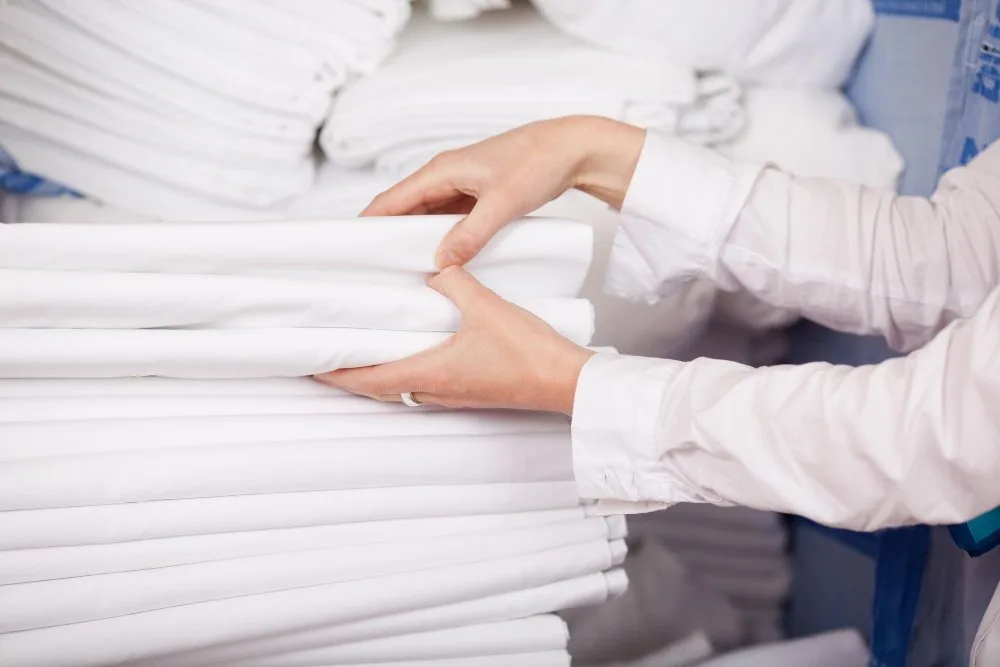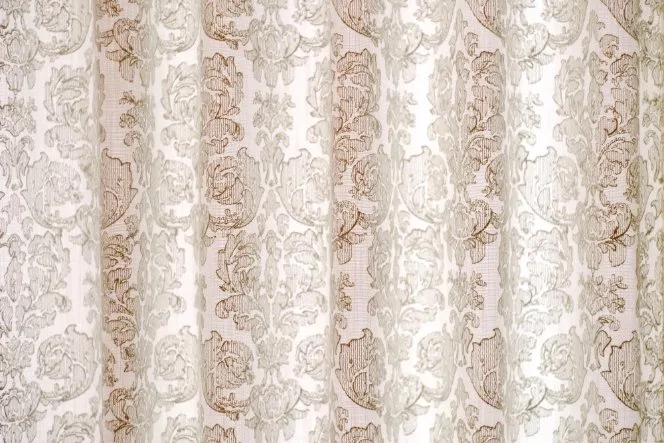Everything you need to know about loose weave linen, from ancient history to modern applications
Table of Contents
- What is Loose Weave Linen?
- A Fabric with Ancient Roots
- From Flax Plant to Fabric
- Understanding the Weave Structure
- Loose vs. Tight Weave: Key Differences
- Different Types of Loose Weave Linen
- Environmental Impact and Sustainability
- The Fraying Problem (And How to Fix It)
- Best Uses for Loose Weave Linen
- Washing and Care Instructions
- What to Look for When Buying
- Frequently Asked Questions
- Final Thoughts
What is Loose Weave Linen?
Loose weave linen is a type of linen fabric where the threads are spaced farther apart during the weaving process, creating visible gaps between the fibers. This open structure gives the fabric its signature breathability and lightweight feel.
Unlike closely woven linen, which has threads packed tightly together, loose weave linen allows air and moisture to pass through easily. You can often hold it up to the light and see through it slightly, which is exactly what makes it perfect for summer clothing and towels.
What Does “Loose Weave” Actually Mean?
The term “loose weave” refers to how the fabric is constructed on a loom. When weaving, threads (called warp and weft) cross over and under each other. In a loose weave:
- Threads are spaced farther apart
- There’s more visible space between individual fibers
- The fabric has a lower thread count per square inch
- Air can circulate freely through the gaps
This is different from tight weaves like plain weave linen, where threads are packed close together for a denser, more durable fabric.
What is Loosely Woven Fabric Called?
Loosely woven fabrics go by several names depending on their specific type:
- Open weave – The most common term
- Loose weave – Describes the construction method
- Gauze – When extremely lightweight and sheer
- Bird’s Eye linen – Features small geometric patterns in the weave
- Toweling linen – Specifically made for high absorbency
- Huckaback – A textured loose weave for towels
These fabrics all share that characteristic open structure, though they may differ in weight and specific use.
A Fabric with Ancient Roots
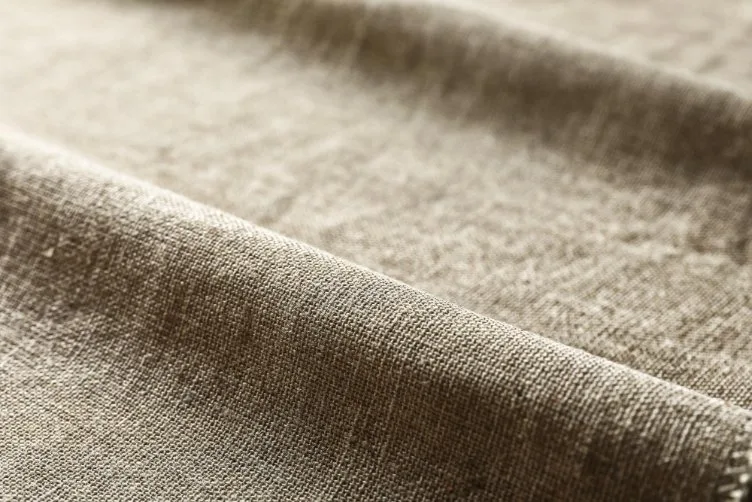
Linen isn’t just old—it’s one of humanity’s oldest textiles. Archaeologists have found dyed flax fibers in caves in present-day Georgia that date back over 30,000 years. That’s longer than written history!
Ancient Egyptian Excellence
The ancient Egyptians were true masters of linen making. They created fabric so fine it had up to 540 threads per inch (finer than most modern linen). Egyptian royalty wore gauzy, loose weave linen that kept them cool in the desert heat, while priests wrapped mummies in tighter weave linen as symbols of purity and wealth.
Linen as Currency
Throughout history, linen was so valuable it served as money. In colonial America, families used bolts of linen fabric for trade instead of coins. Some European families passed down linen bedding as heirlooms for generations, with sheets lasting 30+ years when properly cared for.
The Irish Connection
By the 17th century, Ireland became famous for producing the world’s finest linen. Irish farmers discovered that harvesting flax plants before they fully matured created softer, finer fibers—perfect for loose weave fabrics. This reputation continues today, with Irish linen still considered premium quality.
From Flax Plant to Fabric: The 8-Step Process

Creating linen from the flax plant is one of the most labor-intensive fabric production processes. Here’s what happens:
1. Growing and Harvesting
Flax plants need about 100 days to grow (much faster than cotton’s 150-180 days). Farmers pull the entire plant from the ground, roots and all, rather than cutting it. This preserves the full length of the fibers, which is what makes linen so strong.
2. Retting
The harvested plants undergo “retting”—a controlled decomposition process that breaks down the plant material around the fibers. There are two methods:
- Dew retting: Laying plants in fields and letting natural moisture and microorganisms do the work (takes 2-3 weeks)
- Water retting: Submerging plants in water tanks (faster but requires more water)
3. Breaking and Scutching
After retting, workers use wooden machines to break down the woody stalks (called “boon”) and beat them against boards to remove plant debris. This is physically demanding work that was traditionally done by hand.
4. Hackling
The fibers get drawn through metal combs with increasingly fine teeth, similar to combing hair. This removes short fibers and aligns the long ones. The result is a “strick”—a half-pound bundle of smooth, light grey fibers ready for spinning.
5. Spinning
The combed fibers are spun into yarn using traditional spinning wheels or modern industrial equipment. For loose weave fabrics, the yarn might be spun slightly thicker or with less twist.
6. Weaving
This is where loose weave linen gets its character. Weavers deliberately space the warp and weft threads farther apart on the loom, creating those breathable gaps. The weaver must balance spacing carefully—too loose and the fabric falls apart; too tight and you lose the breathability benefits.
7. Washing and Finishing
The raw fabric (called “greige” linen) gets washed to remove natural oils and impurities. Some manufacturers add softening treatments or leave it in its natural, slightly stiff state that softens over time with use.
8. Dyeing (Optional)
Natural linen comes in shades of ivory, beige, tan, and grey. If you want other colors, the fabric gets dyed. However, heavy bleaching is needed for pure white linen, which isn’t the most eco-friendly option.
Understanding the Weave Structure
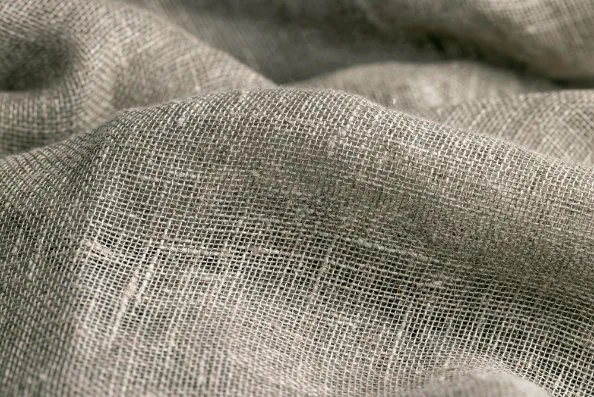
How to Find the Grainline of Your Fabric
The grainline is super important for sewing projects. Here’s how to find it in loose weave linen:
- Look for the selvage edge: This is the tightly woven finished edge that runs along both long sides of the fabric. The grainline runs parallel to this edge.
- Follow the lengthwise threads: These run from top to bottom of the fabric (parallel to selvage). This is the “lengthwise grain” or “straight grain.”
- The crosswise grain: Runs perpendicular to the selvage, from side to side.
- Test the stretch: Fabric has the least stretch along the lengthwise grain and slightly more stretch on the crosswise grain. It has the most stretch on the bias (diagonal).
Key Physical Properties
Loose weave linen typically has these specifications:
| Property | Measurement |
|---|---|
| Weight | 110-150 GSM (lightweight) 140-160 GSM (medium, for drapery) |
| Thread Count | Lower than tight weave (exact count varies) |
| Moisture Absorption | Up to 20% of its weight |
| Shrinkage | Up to 10% on first wash |
| Width | Typically 45-60 inches |
Loose vs. Tight Weave: What’s the Difference?
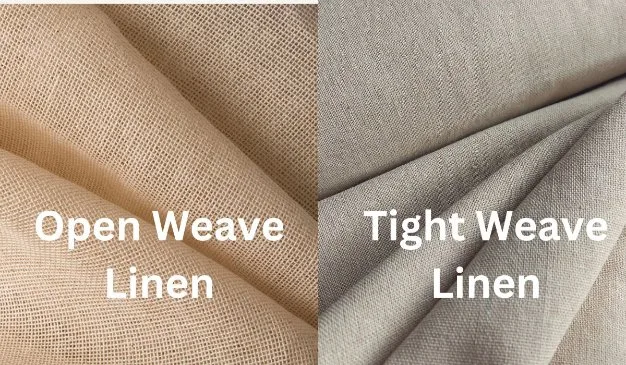
Choosing between loose and tight weave depends on what you’re making. Here’s how they compare:
| Feature | Loose Weave Linen | Tight Weave (Sheeting) Linen |
|---|---|---|
| Breathability | Excellent – open structure allows maximum airflow | Good, but restricted by dense construction |
| Moisture Absorption | Superior – highly absorbent due to open gaps | Moderate absorption |
| Durability | Lower – more prone to fraying and snagging | Higher – tighter structure resists wear better |
| Texture | Rougher initially, visible weave pattern | Softer from the start, smoother surface |
| Best Uses | Towels, summer clothing, curtains, dishcloths | Bed sheets, upholstery, tailored garments |
| Drying Time | Very fast due to airflow | Moderate drying time |
| Maintenance | Requires edge finishing to prevent fraying | Easier to work with, less fraying |
| Cost | Varies, often less expensive | Can be pricier for high-quality sheeting |
Choose Loose Weave When:
- Maximum breathability is your priority
- Making towels or dishcloths
- Creating summer garments
- You need quick-drying fabric
- Making lightweight curtains
Choose Tight Weave When:
- Durability matters most
- Making bed linens or upholstery
- Want less maintenance
- Creating structured garments
- You’re a beginner sewer
Different Types of Loose Weave Linen
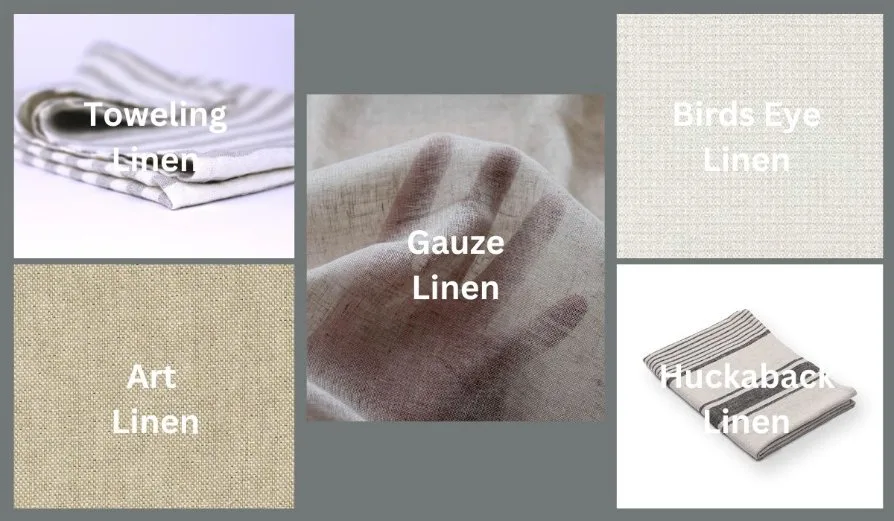
Not all loose weave linens are the same. Here are the main varieties:
Toweling Linen (Glass Toweling)
This is the most common loose weave type. Originally called “glass toweling” because it was used to dry glassware without leaving lint. It often features checkered or striped patterns in red or blue on a white background. Perfect for kitchen towels and dishcloths.
Bird’s Eye Linen
Named for its distinctive pattern of small geometric designs that look like a bird’s eye. This loose weave was traditionally used for diapers and sanitary products because of its high absorbency.
Huckaback Linen
A textured loose weave with a waffle-like appearance. Made from pure linen or a cotton-linen blend, huckaback is especially absorbent and perfect for bathroom towels. The texture helps with drying while remaining lightweight.
Art Linen
A smooth loose weave made from hand-twisted yarns. This type is used for decorative purposes and embroidery because the open structure makes it easy to pull threads for drawn thread work.
Gauze Linen
The lightest and sheerest option. Gauze linen has an extremely open weave that’s almost transparent. It’s used for summer scarves, lightweight curtains, and overlays.
Modern Innovations
Around 2010, the textile industry introduced new treatments and techniques for linen:
- Knitted linen: Unlike traditional woven linen, knitted versions offer more stretch and flexibility while maintaining breathability
- Washed linen: Pre-washed and enzyme-treated linen arrives soft and slightly wrinkle-resistant, eliminating the initial stiffness
- Linen blends: Mixing linen with cotton, silk, or small amounts of elastic creates fabrics that combine linen’s breathability with improved wrinkle resistance
These innovations make linen more accessible to people who love its properties but want easier maintenance.
Environmental Impact and Sustainability
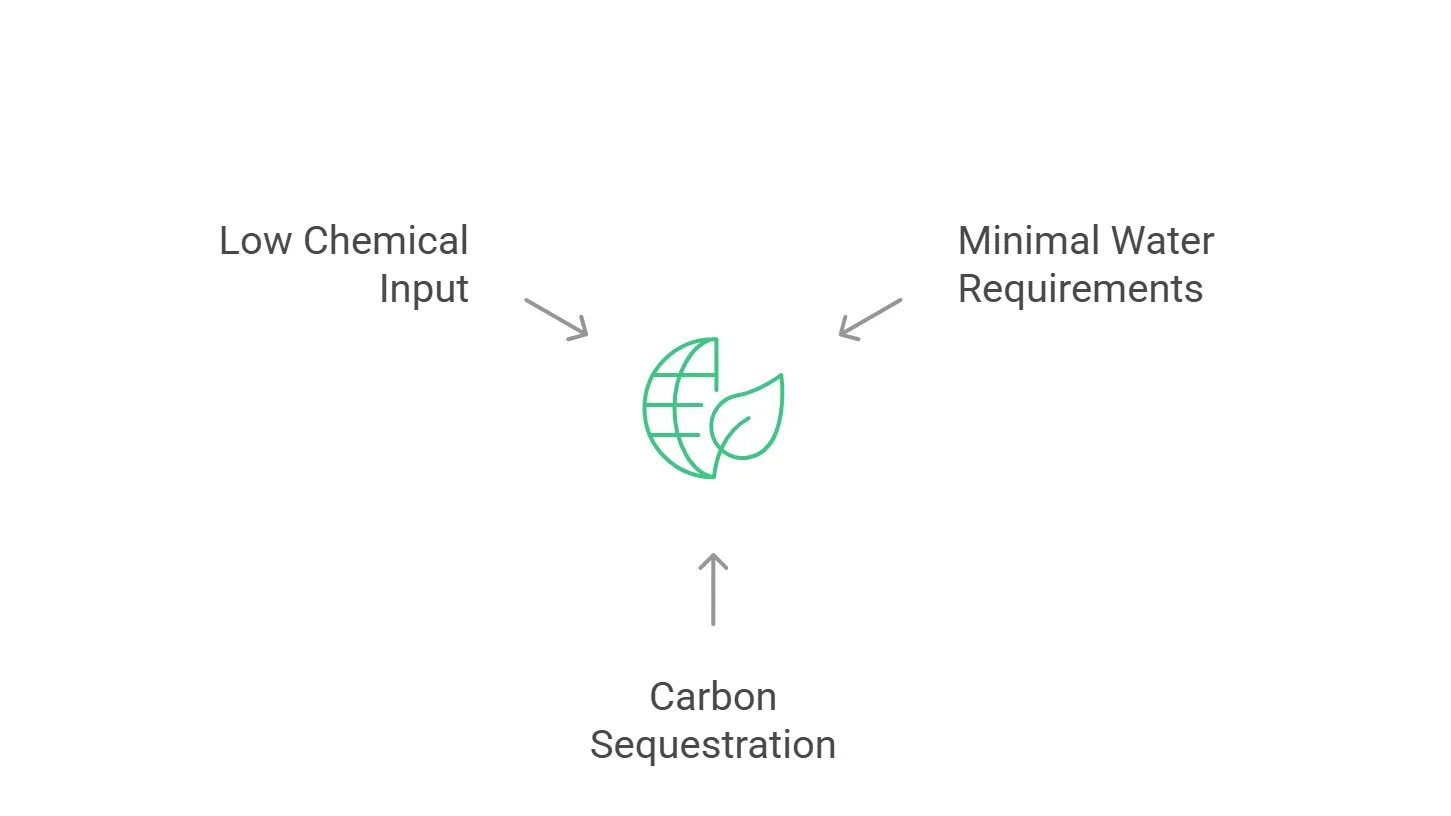
If you care about eco-friendly fabrics, linen is one of the best choices. Here’s why:
Minimal Water Requirements
Flax cultivation is incredibly water-efficient. Cotton requires about 10,000 liters of water per kilogram, while flax needs only around 1,000 liters—and even that comes mostly from rainfall. European flax farming rarely requires irrigation at all.
A linen t-shirt uses one-quarter the water of a cotton t-shirt across its entire lifecycle.
Carbon Sequestration
Here’s something cool: flax plants actually help fight climate change. As they grow, they absorb CO2 from the atmosphere. One hectare of flax sequesters about 3.7 tons of CO2 per year. That’s roughly equal to the emissions from a small car driving around the world once.
Low Chemical Input
Flax is a hardy plant that needs minimal help:
- Requires 5 times less fertilizer than cotton
- Grows without pesticides in most European regions
- No synthetic chemicals needed in organic flax farming
- Natural pest resistance means fewer agricultural chemicals
European Production
About 80% of the world’s flax grows in Western Europe, primarily in France, Belgium, and the Netherlands. This concentrated production means shorter transportation distances compared to cotton, which often travels thousands of miles from field to factory to store.
The Full Picture: Energy Use
While growing flax is eco-friendly, the full story is more nuanced:
- Manufacturing stage: Accounts for 21% of total energy consumption
- Consumer use phase: Takes up 78% of energy (mostly from washing and ironing)
This means you have control over most of linen’s environmental impact. Air-drying instead of using a dryer and accepting natural wrinkles instead of ironing can significantly reduce your footprint.
The Ironing Energy Trade-off
Here’s an honest downside: linen wrinkles easily, and ironing uses about 7 times more energy than washing. Since loose weave linen takes longer to iron than smoother fabrics, the energy consumption during use can be slightly higher than cotton.
The solution? Many people now embrace linen’s wrinkled look as part of its natural charm.
Biodegradability and Lifespan
At the end of its life, linen is fully biodegradable. It breaks down naturally without releasing harmful chemicals. Plus, properly cared for linen can last 30+ years, meaning you replace it far less often than synthetic alternatives.
The Fraying Problem (And How to Fix It)
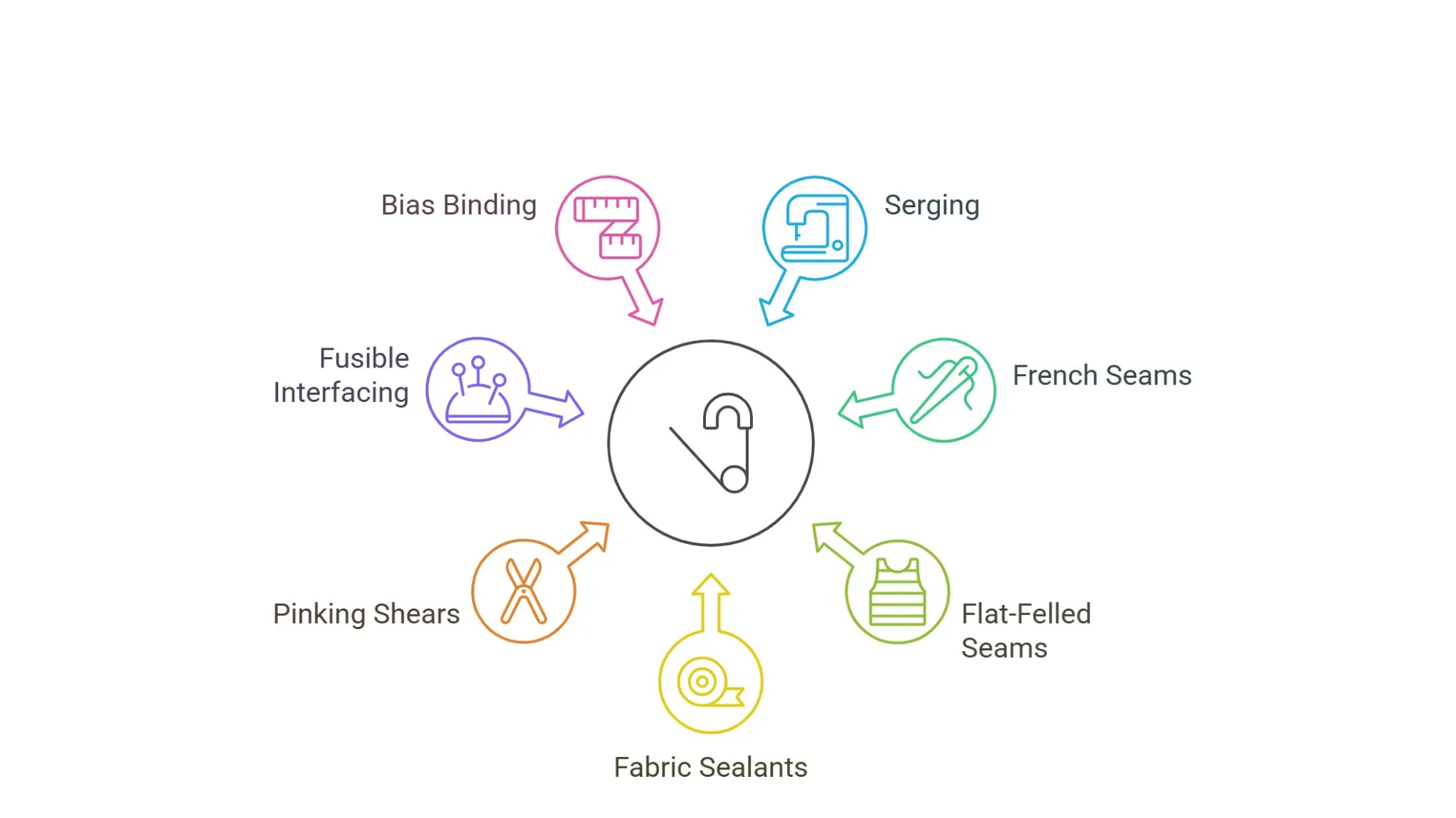
Let’s talk about loose weave linen’s biggest challenge: it frays like crazy. Those open gaps that make it breathable also make the edges want to unravel.
Why Loose Weave Frays So Much
The threads in loose weave linen aren’t tightly secured by neighboring threads, so they pull out easily when cut. One person shared a story about a dress made from loose weave linen: after three years and multiple washes, the unfinished seam allowances had raveled from ¾ inch down to just ¼ inch!
How to Stop Fraying: 7 Methods
1. Serging or Overlocking
The gold standard for preventing fraying. A serger machine cuts the fabric edge while simultaneously wrapping it with 3-4 threads. This is the fastest and most durable method.
No serger? Use your regular sewing machine‘s overlock stitch or zigzag stitch instead. Use a narrow zigzag (2-3mm wide) and stitch close to the raw edge.
2. French Seams
French seams completely enclose raw edges inside a second seam, creating a clean finish on both sides of the fabric. Perfect for lightweight loose weave linens like gauze. However, they can be bulky with heavier fabrics.
3. Flat-Felled Seams
Flat-felled seams are what you see on jeans—super strong and durable. One seam allowance wraps around the other, enclosing both edges. Great for items that will get heavy use, like kitchen towels.
4. Fabric Sealants
Products like Fray Check or clear fabric glue seal thread ends together. Apply a thin line along the cut edge and let it dry clear. This works well for small areas or emergency fixes, but the glue can weaken after several washes.
5. Pinking Shears
These scissors with zigzag blades cut a serrated edge that slows (but doesn’t stop) fraying. Use them as a temporary solution or combined with another method. The serrated edge will eventually fray after multiple washes.
6. Fusible Interfacing
Iron lightweight fusible interfacing to the wrong side of seam allowances. This adds stability and prevents threads from pulling out. Match the interfacing weight to your fabric weight—never go heavier than the fabric itself.
7. Bias Binding
Wrap raw edges with bias tape for a decorative and functional finish. This adds bulk but provides excellent protection. Perfect for unlined garments where the inside will be visible.
What About Shrinkage?
Plan for up to 10% shrinkage on your first wash. Always pre-wash your fabric before cutting if you’re making garments. For home decor items, you might choose to embrace the shrinkage as part of the natural linen aesthetic.
Best Uses for Loose Weave Linen
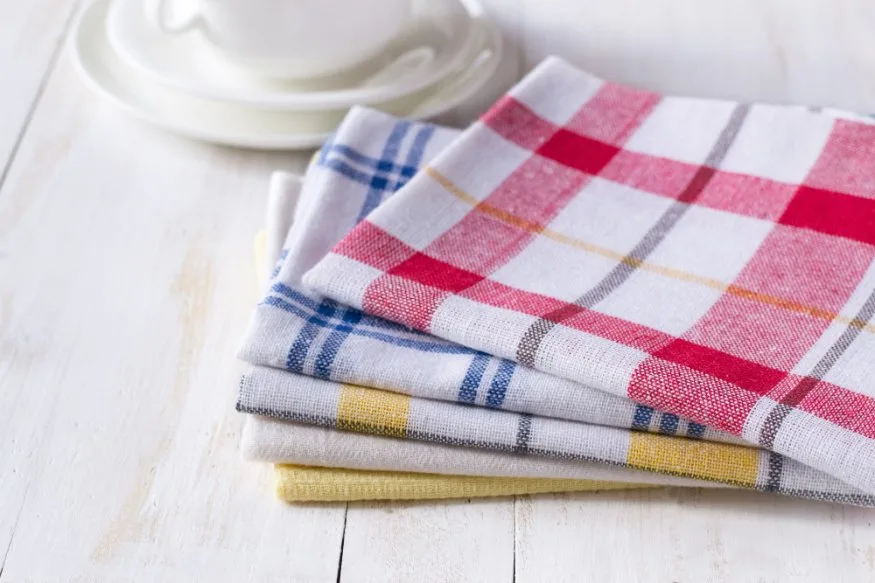
Kitchen and Bath Textiles
Loose weave linen shines here:
- Kitchen towels: The absorbency is unmatched. They dry dishes without leaving lint or water spots.
- Hand towels: Dries quickly between uses, reducing musty smell risks
- Bath towels: Lightweight and fast-drying, though not as plush as terry cloth
- Dishcloths: Perfect for cleaning because they rinse clean and dry quickly
Summer Clothing
The breathability makes loose weave linen ideal for hot weather:
- Loose-fitting summer dresses and tunics
- Beach cover-ups and resort wear
- Lightweight scarves and wraps
- Casual summer pants and shorts
- Unlined blazers for transitional weather
Home Decor Applications
- Sheer curtains: Filter sunlight while maintaining airflow and privacy
- Table runners: The textured look adds organic warmth to table settings
- Throw pillow covers: Mix with smoother textures for visual interest
- Placemats: Casual enough for daily use, elegant enough for entertaining
Specialty Uses
- Embroidery base: The open weave makes drawn thread work easier
- Backing fabric for quilts: Breathable and comfortable against skin
- Baby products: Highly absorbent and naturally hypoallergenic
Washing and Care Instructions
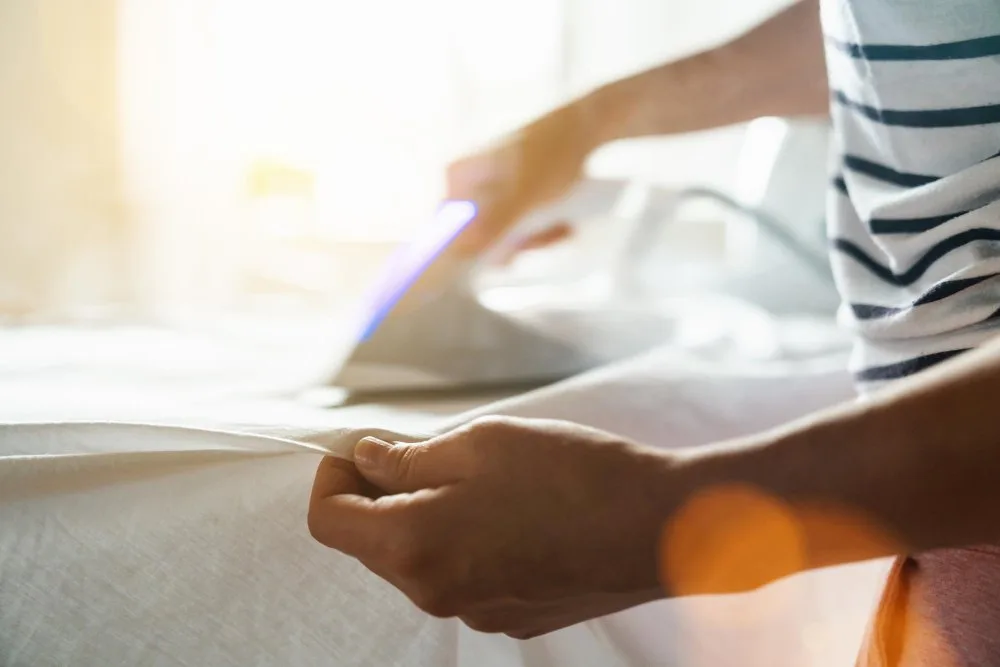
First Wash: What to Expect
Your first wash will transform the fabric:
- Expect up to 10% shrinkage
- The fabric will soften noticeably
- Natural oils wash out, increasing absorbency
- Colors may shift slightly
Regular Washing
Water temperature: 40°C (104°F) or cooler. Hot water can cause excessive shrinkage.
Detergent: Use mild, liquid detergent. Avoid bleach—it weakens natural fibers. For white linen, try adding half a cup of white vinegar to the rinse cycle instead.
Cycle: Gentle cycle with plenty of room in the machine. Fill the washer only ¾ full so items can move freely.
Separation: Wash white, dark, and colored items separately to prevent color transfer.
Drying Methods
Air drying (best option): Hang or lay flat to dry naturally. This preserves fiber strength and saves energy. Shake out items before hanging to minimize wrinkles.
Tumble drying: If you must use a dryer, choose low heat and remove items while still slightly damp. Over-drying makes linen stiff and difficult to iron.
Drying time: Loose weave linen dries faster than tight weave due to better airflow—usually 1-2 hours on a clothesline.
Ironing (If You Must)
Many people now embrace linen’s natural wrinkles, but if you want a crisp look:
- Iron while fabric is still slightly damp
- Use steam setting or lightly mist with water
- Iron on the wrong side to prevent shine
- Move iron in the direction of the grain
- Don’t press too hard—let the iron’s weight and steam do the work
Storage Tips
- Store completely dry items to prevent mildew
- Fold along natural creases rather than forcing new ones
- Use breathable cotton storage bags, not plastic
- In humid climates, add silica gel packets to storage areas
- Optional: Add lavender sachets for a fresh scent and moth deterrent
What to Look for When Buying
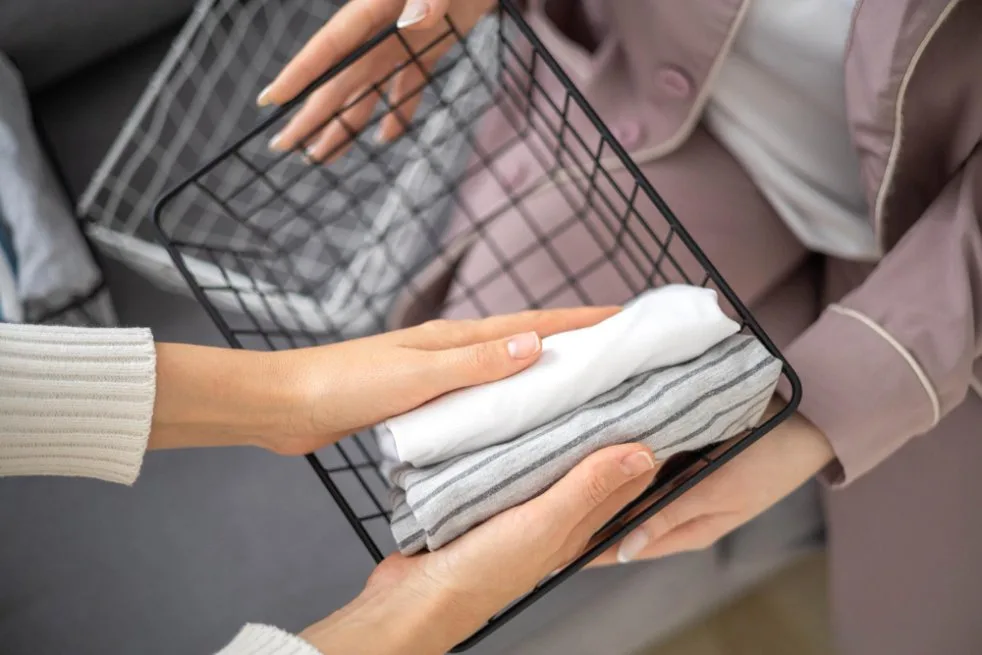
@andreacheong_ The Ultimate Guide to Quality Linen: Price, Fabric, and Fashion
♬ original sound – Andrea Cheong
Quality Indicators
Fiber length: High-quality linen is made from long flax fibers. Ask about the origin—European flax (especially French, Belgian, or Lithuanian) is generally superior.
Consistent weave: Hold the fabric up to light and check for even spacing. Irregular gaps indicate lower quality.
Natural color: Authentic linen comes in ivory, beige, tan, or grey. Bright white has been heavily bleached. Vibrant colors require more dye and processing.
Hand feel: Even loose weave linen should feel crisp and slightly stiff when new. It will soften with washing but shouldn’t feel limp or lifeless.
Certifications That Matter
- OEKO-TEX Standard 100: Free from harmful substances, safe for sensitive skin
- GOTS (Global Organic Textile Standard): Organic fibers and ethical processing
- Masters of Linen®: 100% European production from field to fabric
- European Flax™: Guarantees European-grown flax with sustainable practices
Regional Quality Differences
Egyptian linen: Prized for exceptionally long, fine fibers grown in Nile River soils. Creates smooth, luxurious fabric.
Irish linen: Famous worldwide for softness. Irish farmers harvest flax before full maturity, creating finer threads.
Lithuanian/Baltic linen: Known for superior quality due to ideal climate and traditional manufacturing methods. Often considered the best for durability.
French/Belgian linen: Accounts for most European production. High quality with excellent sustainability practices due to short supply chains.
Typical Pricing
Expect to pay more for linen than cotton fabric, but remember it lasts much longer:
- Basic loose weave: $8-15 per yard
- Mid-range quality: $15-30 per yard
- Premium/organic: $30-50+ per yard
The investment pays off through durability and performance.
Frequently Asked Questions
Final Thoughts
Loose weave linen is a fabric with real character—both good and challenging. Its 30,000-year history proves humans have valued this textile for excellent reasons: unmatched breathability, superior moisture absorption, and impressive sustainability credentials.
The Bottom Line
Choose loose weave linen when you need:
- Maximum breathability for hot weather use
- Highly absorbent towels or dishcloths
- Quick-drying fabric for active use
- Eco-friendly material with low environmental impact
- Natural, biodegradable fibers
Skip it when you need:
- Ultra-durable fabric for high-wear applications
- Low-maintenance, beginner-friendly material
- Smooth, structured garments
- Bed linens (use tight weave instead)
Key Takeaways
Remember These Points:
- Finish all edges immediately after cutting to prevent fraying disasters
- Pre-wash before sewing to account for 10% shrinkage
- Air-dry when possible to reduce environmental impact and extend fabric life
- Embrace the wrinkles or iron while damp—it’s part of linen’s charm
- Look for certifications like OEKO-TEX and Masters of Linen® for quality assurance
- Invest in quality European linen that will last decades with proper care
- Use the right weave for your project—loose for breathability, tight for durability
Moving Forward
Loose weave linen requires more care and attention than synthetic alternatives, but the payoff is worth it. You’re choosing a fabric that’s gentle on the planet, comfortable in warm weather, and will last for decades if treated properly. The fraying challenge becomes manageable once you develop good edge-finishing habits, and many sewers find working with linen’s natural properties more satisfying than fighting against synthetic fabrics.
Start small if you’re new to linen—make kitchen towels or a simple summer top before tackling complex projects. Once you feel that distinctive texture soften with each wash and experience the cooling breathability on a hot day, you’ll understand why humans have treasured this fabric for 30,000 years.
Want to explore more fabric options? Check out our comparison of natural versus synthetic fabrics or learn about satin fabric for smoother applications.
References and Further Reading
- Alliance for European Flax-Linen & Hemp: Flax-Linen in History – Comprehensive timeline of linen’s historical development
- Impactful Ninja: How Sustainable Are Linen Fabrics? – Detailed life-cycle analysis of linen’s environmental impact
- Fabrics-Store: Types of Linen Fabrics Explained – Technical guide to different linen weaves and their uses


